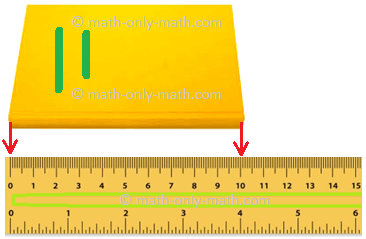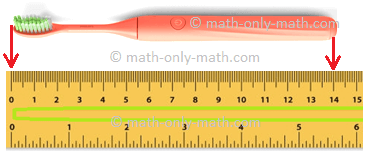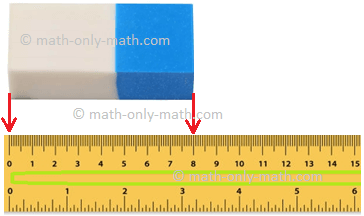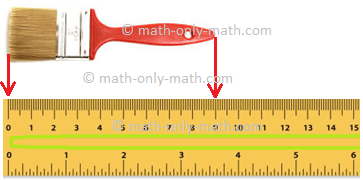Subscribe to our ▶️ YouTube channel 🔴 for the latest videos, updates, and tips.
Using a Ruler
Line segments can be measured using a ruler or a divider.
The ruler given below has 15 cm marked on it. The length of the ruler is 15 cm.

The upper edge of the ruler is marked in centimetres.
Each centimetre is further divided into 10 divisions.
Each division corresponds to 1 millimetre (mm)
One-tenth of a centimetre is called a millimetre.
10 mm = 1 cm 1 mm = \(\frac{1}{10}\) cm = 0.1 cm
The lower edge of the ruler is marked in inches.
1 inch = 2.5 cm 6 inches = 15 cm
Measure the length of the line segment RS.
Step I: Place the scale with its edge showing centimetre along the line segment RS such that ‘O’ of the scale coincides with the point R.
Step II: Read the mark on the scale against the point ‘S’.
Step III: The point ‘S’ is at 7 divisions after 5 cm.
Step IV:Therefore the length of the line segment is 5 cm 7 mm = 5.7 cm.
To measure a length of a pencil, place at the ‘0’ of the ruler at the one end of the pencil and note the position of the other end. In the given picture the other end of the pencil is at 12. So, the length of the pencil is 12 cm.
Questions and Answers on Using a Ruler:
1. Look at the following pictures and find the length of each objects.
(i)
Length of the book is ………… cm
(ii)
Length of the toothbrush is ………… cm
(iii)
Length of the eraser is ………… cm
(iv)
Length of the brush is ………… cm
2nd Grade Math Practice
From Using a Ruler to HOME PAGE
Didn't find what you were looking for? Or want to know more information about Math Only Math. Use this Google Search to find what you need.








New! Comments
Have your say about what you just read! Leave me a comment in the box below. Ask a Question or Answer a Question.